Why Choose Orthotics?
Why Orthotics?
- Foot Pain
- Knee Pain
- Bunions
- Achilles Pain
- Heel Pain
- IT Band Syndrome
- Lower Back Pain
- And more!
Generieke Viagra is ‘s werelds populairste medicijn voor een effectieve behandeling van erectiestoornissen (ED). Generieke Viagra https://erectiepillen-apotheek.nl/pfizer-viagra-online-kopen is een kortwerkend medicijn waarvan de werking ongeveer vijf uur aanhoudt. Dit medicijn werkt echter het beste voor mannen, die een stevigere erectie nodig hebben en die ook langer stevig moet blijven.
Make Your Feet Happy
Don’t take just our word about the effectiveness of orthotics to make your feet happier.
Visit our medical education page to see the evidence for yourself in peer-reviewed articles from medical journals.
Diagnosis
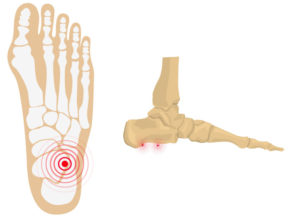
Plantar Fasciitis
Plantar Fasciitis is a condition leading to heel or arch pain. It is similar to a condition known as Heel Spur. Both conditions are caused by the overstretching of a rubber band type ligament that attaches to the painful heel bone. This is easily diagnosable as there is a lot of pain in the heel after getting up from resting, and the pain slowly eases as you begin to move. The standard of care is an orthotic with a first ray cutout which allows the plantar fascia ligament to stretch but not tear. A correction to the heel tilt to reduce the maximum pronation will also further decrease or eliminate the plantar fasciitis.
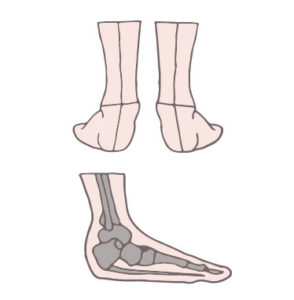
Flat Feet
Flat feet, also known as Pes Planus or fallen arches, are generally caused by the weakening of several tendons or joint malalignment, resulting in the flattening of the foot’s arch. To prevent further joint, ligament and tendon pain, a well-designed, supportive orthotic with a heel posting correction will prevent the pronation from worsening and will eliminate further stress.
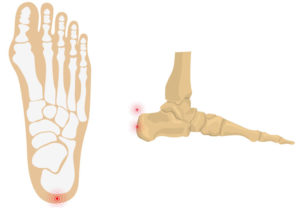
Achilles Tendonitis
Achilles Tendonitis, also known as or Posterior/ Back Heel Pain or Haglund’s Deformity, is caused by the pulling or tearing of the tendon, or the formation of a spur on the tendon. The tendon connects the very powerful calf muscle to the back of the heel bone. This is easily diagnosable as there is a lot of pain in the heel after getting up from resting, and it slowly eases as you begin to move. A small elevation with correction of the position of the heel will reduce the pain.
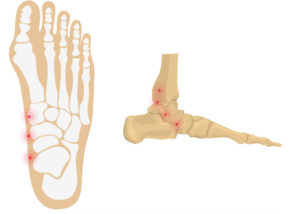
Posterior Tibial Tendonitis
Posterior tibial tendon dysfunction, also known as posterior tibial tendonitis, is usually caused by a tendon that is being overstretched and weakened. It can lead to a very serious flatfoot deformity with great disability. This requires prompt treatment with a well-designed, very supportive orthotic which restricts the ankle from “rolling in.”
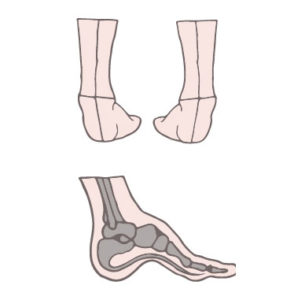
High Arch
High Arch, also known as Pes Cavus, is generally caused by hereditary and neurological factors. This may lead to forefoot pressure, hammertoes and ankle sprains. The orthotic will correct the heel position (by posting) and will prevent supination, therefore, providing stability and cushioning to the foot.

Callus / IPK
Callus/ intra plantar keratosis (IPK) is the thickening of skin that occurs in areas of excess pressure on the bottom of your foot. By placing a marker on the foot cast impression you make, we will be able to see where your callus is forming and our experts will then create an orthotic with an offloading U pad to remove the excess pressure from your foot. Please ensure the foot cast impression shows where you have the callus.

Chronic Ankle Sprains
Chronic Ankle Sprains: This condition is usually caused by walking, running, or sports play. After rolling your ankle one time, you develop a greater chance of rolling your ankle again. The ligament will heal itself but with a little less strength each time. A properly crafted orthotic will help protect your ankle from placing your heel bone in a deep heel cup, thus making it more stable.
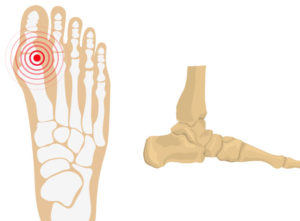
Turf Toe
Turf Toe: This condition is essentially a sprain of the big toe joint. The ligaments that surround the big toe joint are injured. Sesamoid bones under the big toe joint can also be involved if the sprain is acute. Depending on the severity of the turf toe, certain orthotic modifications will help the big toe joint to be somewhat immobilized so that it can heal properly. The “Morton’s Extension” will decrease the motion of the toe, preventing further damage and pain.

Sesamoiditis
Sesamoiditis: This is a painful condition located under the big toe area of the ball of the foot. Two “sesamoid” bones can become inflamed and sore from the constant pounding of your foot. It is usually seen with a “plantarflexed first metatarsal bone.” A customized orthotic offloading pad, called a dancer’s pad, will shield these bones from trauma and permit them to heal.
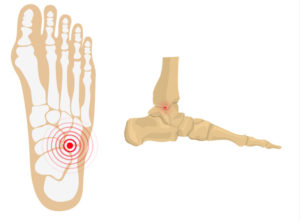
Sinus Tarsi Syndrome
Sinus Tarsi Syndrome: This is a painful condition that most people think originates from the outside of the ankle, but in fact it comes from a joint one inch below the ankle. Pain at this area moves across the ankle to the other side of the foot. It is caused by hyper pronation or excessive lowering of the foot arch which “jams” the outside part of the ankle. A properly designed and extra deep heel cup orthotic will prevent this hyper pronation and take the stress off the Sinus Tarsi, leading to long lasting pain relief.

Predislocation Metatarsal Phalangeal Joint
Predislocation metatarsal phalangeal joint: a painful condition located under the toe area by the ball of the foot. This is an area where a particular joint (usually below the second or third toe) can become inflamed and sore from the constant pounding of the foot. A hammertoe may also develop. This adds more pressure to that individual ball. A customized orthotic with an offloading U pad will shield this painful joint from trauma and allow it to heal.
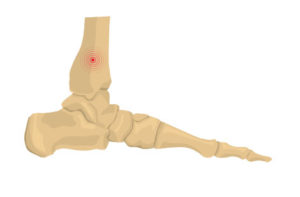
Limb Length Discrepancy
A common condition where one side of the body is longer than the other. An orthotic with correction on the short side of the body will equalize the discrepancy. If the limb length is too significant, the heel lift will be too large to fit into the sneaker or shoe, but if the limb length is less than 2.0cm (3/4inch), this orthotic will be able to help.
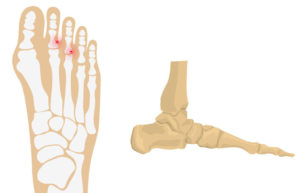
Morton’s Neuroma
Neuroma (Morton’s Neuroma): This is a very painful, swollen nerve condition that occurs at the bottom of the foot where your toes begin. It is usually the 2nd and 3rd toes or the 3rd and 4th toes, however, it is often hard to distinguish and pinpoint which toe is actually causing the pain. The feeling is described as that when you feel as if you have a rolled-up sock in your shoe. A properly chosen orthotic with a “metatarsal pad” can help relieve your pain by spreading the metatarsals that are putting pressure on the swollen nerve.
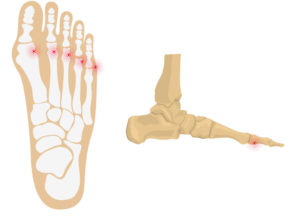
Metatarsalgia
Metatarsalgia: this is a condition where pain is felt in the bottom or “ball” (front) of the foot. It can also cause numbing of the toes. Metatarsal bars or pads can be customized to alleviate your problem.

Bunions
Bunions (Hallux Valgus): A progressive condition in which there is a bony prominence that protrudes near the big toe joint causing pain from the overlying shoe. A properly chosen orthotic will rotate the bunion to slow down the problem from worsening, and may delay or even prevent surgery.
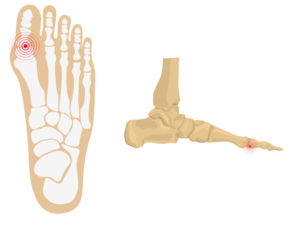
Hallux Limitus / Rigidus
Hallux Rigidus (also known as Hallux Limitus or Dorsal Bunion): This is a condition where pain is felt within the big toe joint. It is caused by stiffness as well as bone and joint injury and can lead to arthritis within the joint. A properly chosen orthotic with a “Morton’s Extension” will decrease the motion, therefore preventing further damage and pain.
Don’t Let Foot Pain Get In the Way
of Enjoying Your Active Life
- Designed by Podiatrists
- Fast Turn Around!
- Save Your Foot and Someone Else’s | Arcus Gives Back
- All products are hand-crafted in the United States
- 60 day 100% Money Back Warranty from the date you receive your orthotics
- Handcrafted Specifically For You
- Prevent Future Issues With Your Feet
- We offer a 2-year umbrella insurance policy for $90. This includes a total of 2 top-cover exchanges as well as any fix to a compromised hard-shell
